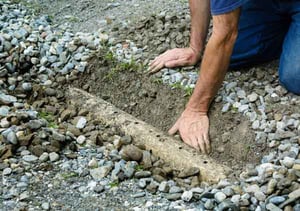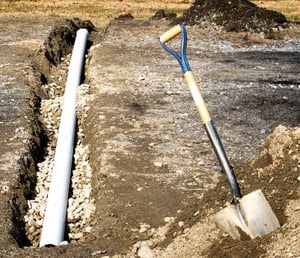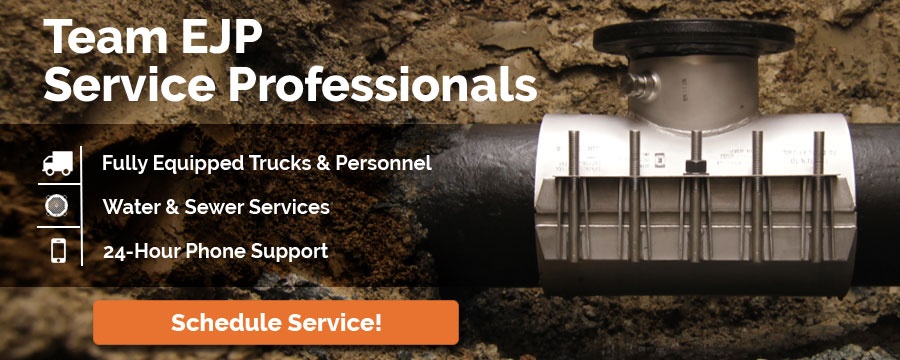How to Install a French Drain to Improve Your Property's Drainage
- Home
- Team EJP Blog
- How to Install a French Drain to Improve Your Property's Drainage
- May 17, 2019 9:23:30 AM
- Everett J. Prescott
When you've got water issues on your lawn or issues with your basement leaking water, there could be any number of causes. The best solution will always be to improve drainage on your property. This allows excess water from up slope to drain away, preventing it from becoming a problem for your lawn or structure. One of the most popular options is a French drain, a simple structure built into your lawn to help move water away from your home or areas of concern. Here's how to install one.
Installing a French Drain
Start by looking at the area where the water is building up, then look up slope from that area to determine where you'll need to add drainage. If your structure is downhill from a slope and you're having issues with a wet basement, that's one of the problem areas you'll need to address by diverting drainage.
 In its simplest form, a French drain is a trench with perforated drainage pipe laid in it that is then covered by gravel. The traditional version not even bothering with the drainage pipe and simply adding the gravel. The trench is continued to the point where you want the water to drain away after it falls into the drain when it comes down the slope. This directs the water away from your structure or problem areas in your lawn, keeping things drier.
In its simplest form, a French drain is a trench with perforated drainage pipe laid in it that is then covered by gravel. The traditional version not even bothering with the drainage pipe and simply adding the gravel. The trench is continued to the point where you want the water to drain away after it falls into the drain when it comes down the slope. This directs the water away from your structure or problem areas in your lawn, keeping things drier.
But where do you want to direct the water too? If you've got a spot with sandy soil on your property such as a rain garden or similar area where the water can more slowly percolate into the soil, that's a great place to consider. If you don't have one of these features, building one gives you an awesome location to route your excess stormwater.
When a structure is involved, sometimes simply moving the water downslope from it makes the difference, though you may have to watch for soil erosion becoming an issue. Simply dig a trench a foot or two deep and about a foot wide around the structure to the downhill slope, add a drainage pipe to improve outflow and fill it with gravel.
 For the best drainage, you'll want to leave the surface of the gravel bare, but in some situations, where the water flow isn't overwhelming, you can even add a bit of sod or soil and grass seed to make it part of your lawn. In this situation, you'll want to be aware that this area will also be likely to dry out first in a drought, requiring additional watering.
For the best drainage, you'll want to leave the surface of the gravel bare, but in some situations, where the water flow isn't overwhelming, you can even add a bit of sod or soil and grass seed to make it part of your lawn. In this situation, you'll want to be aware that this area will also be likely to dry out first in a drought, requiring additional watering.
Make sure that wherever you're draining your water it isn't going to impact somebody else's property. You'll also want to check with your city codes department and get the location of any utilities that are crossing your property to ensure you don't damage them accidentally. Create a 1% slope, or 1' of drop in a 100' of trench, to ensure proper drainage.
By adding a French drain around your structure's foundation or problem areas in your lawn, you can ensure that you're not keeping unwanted water near your home or business. Team EJP has helped countless water utilities and other organizations create smart drainage solutions for stormwater that help protect the environment and your bottom line. Please feel free to contact us today with any questions or to get started improving the drainage on your site.








